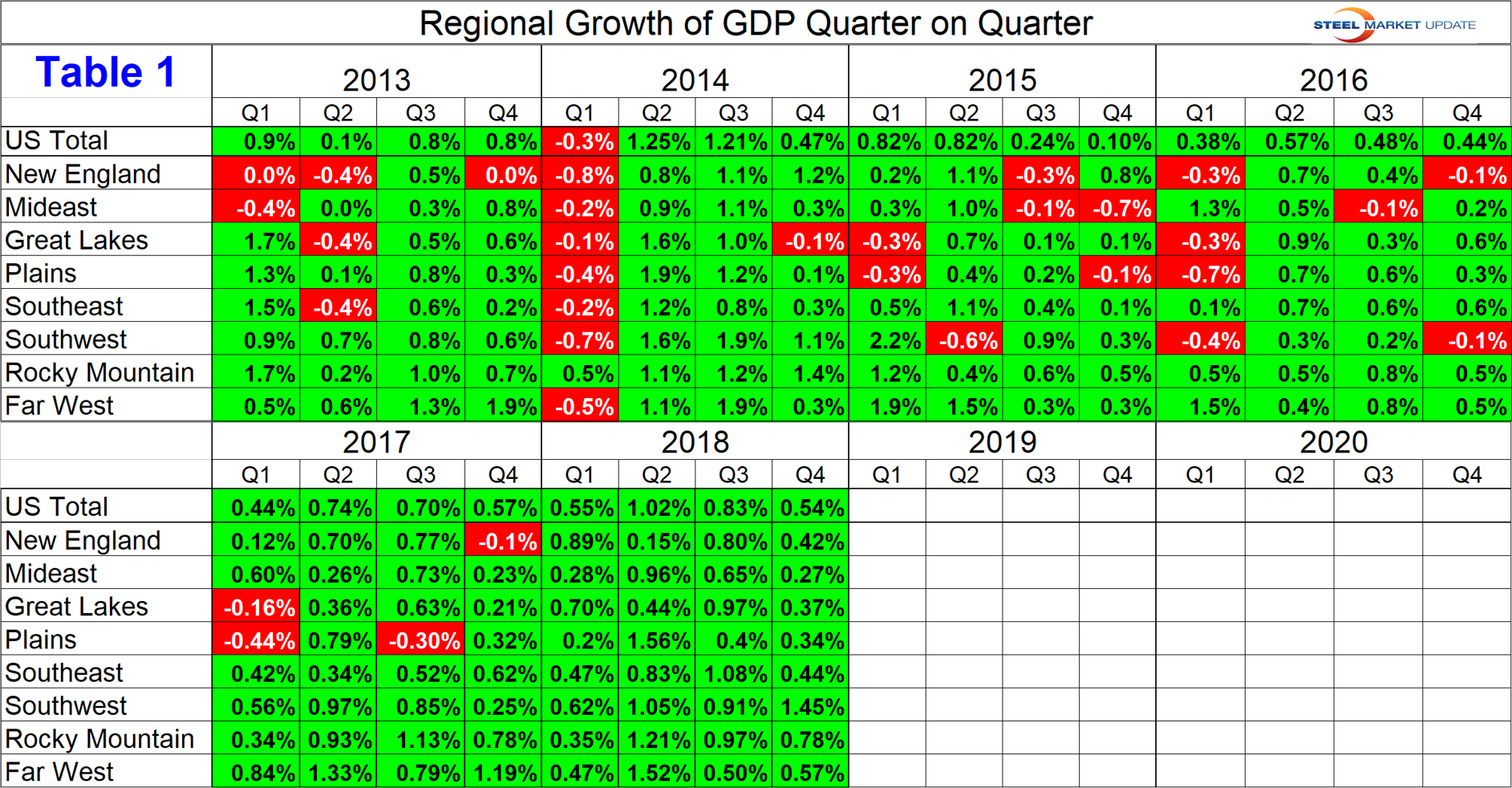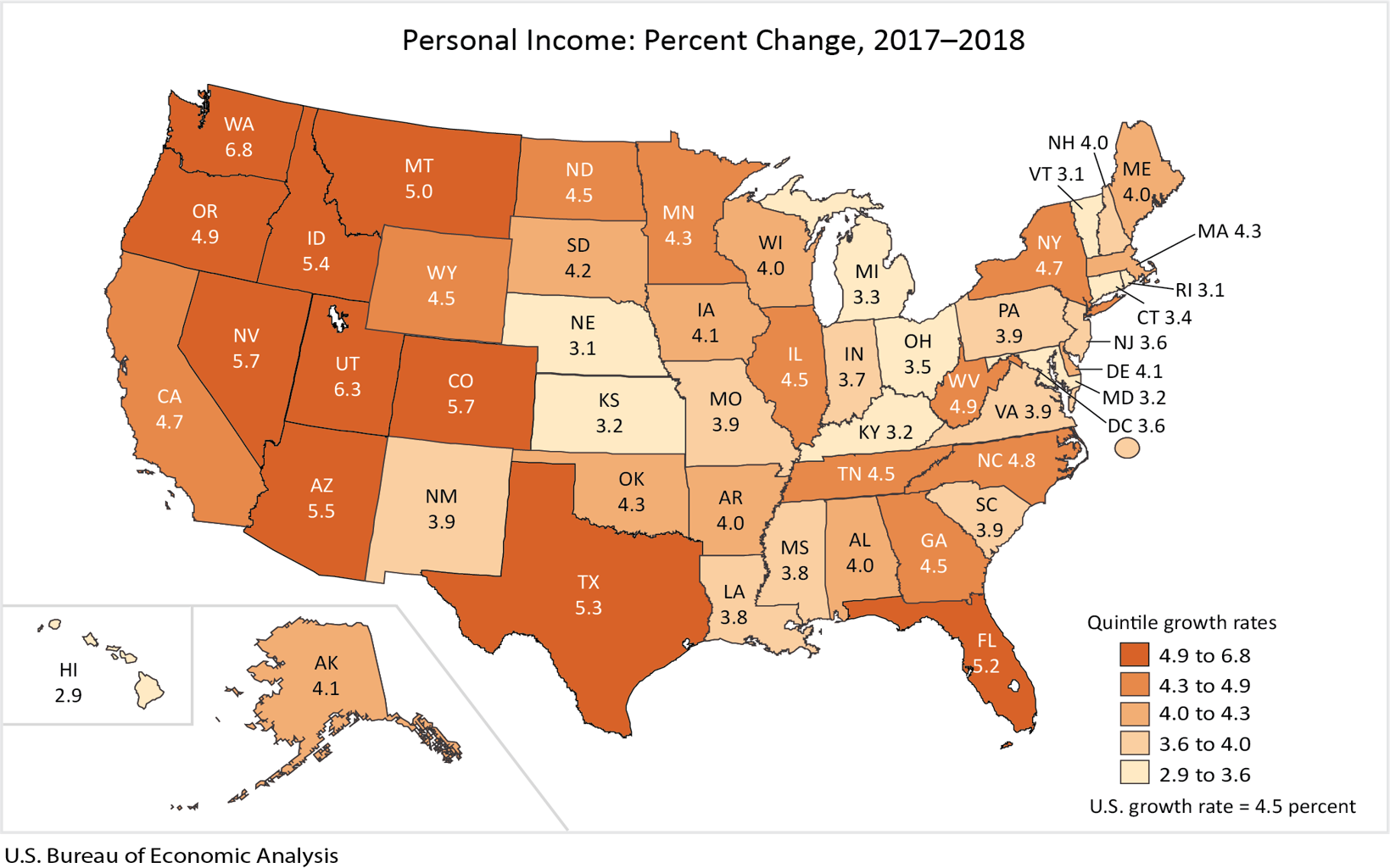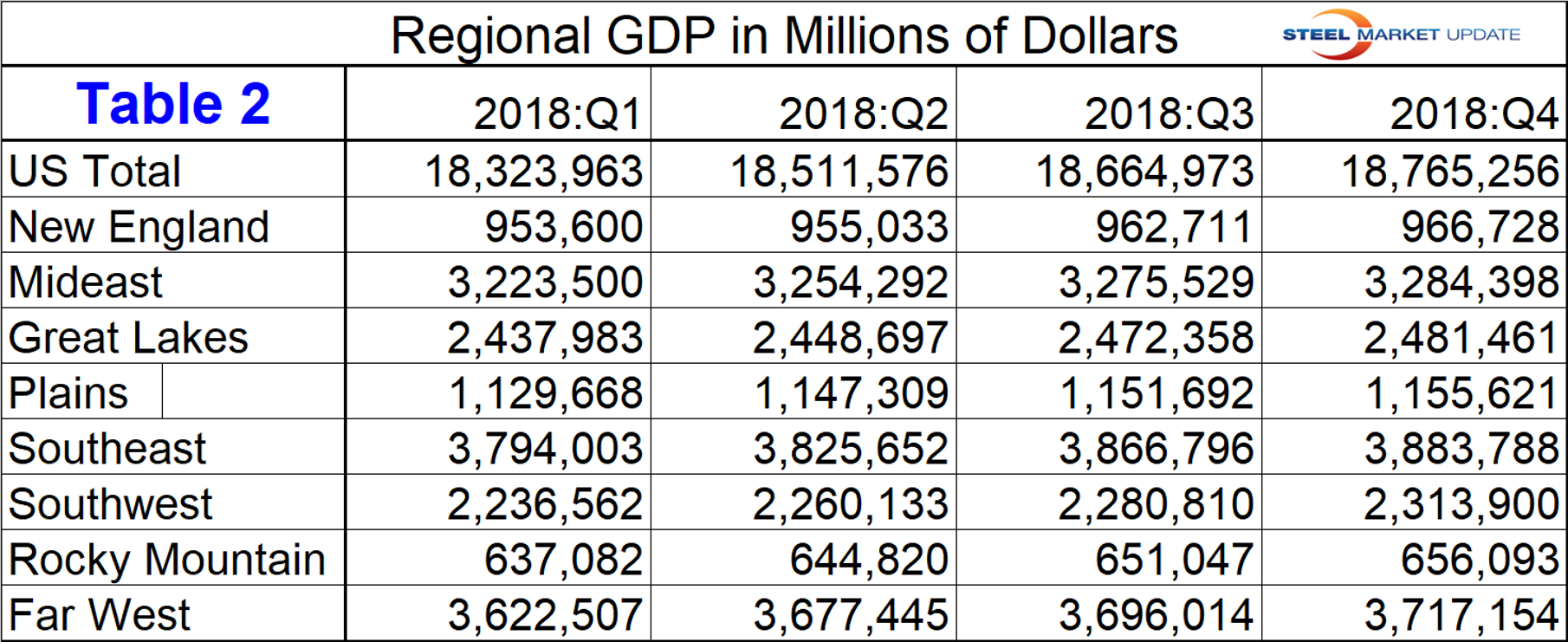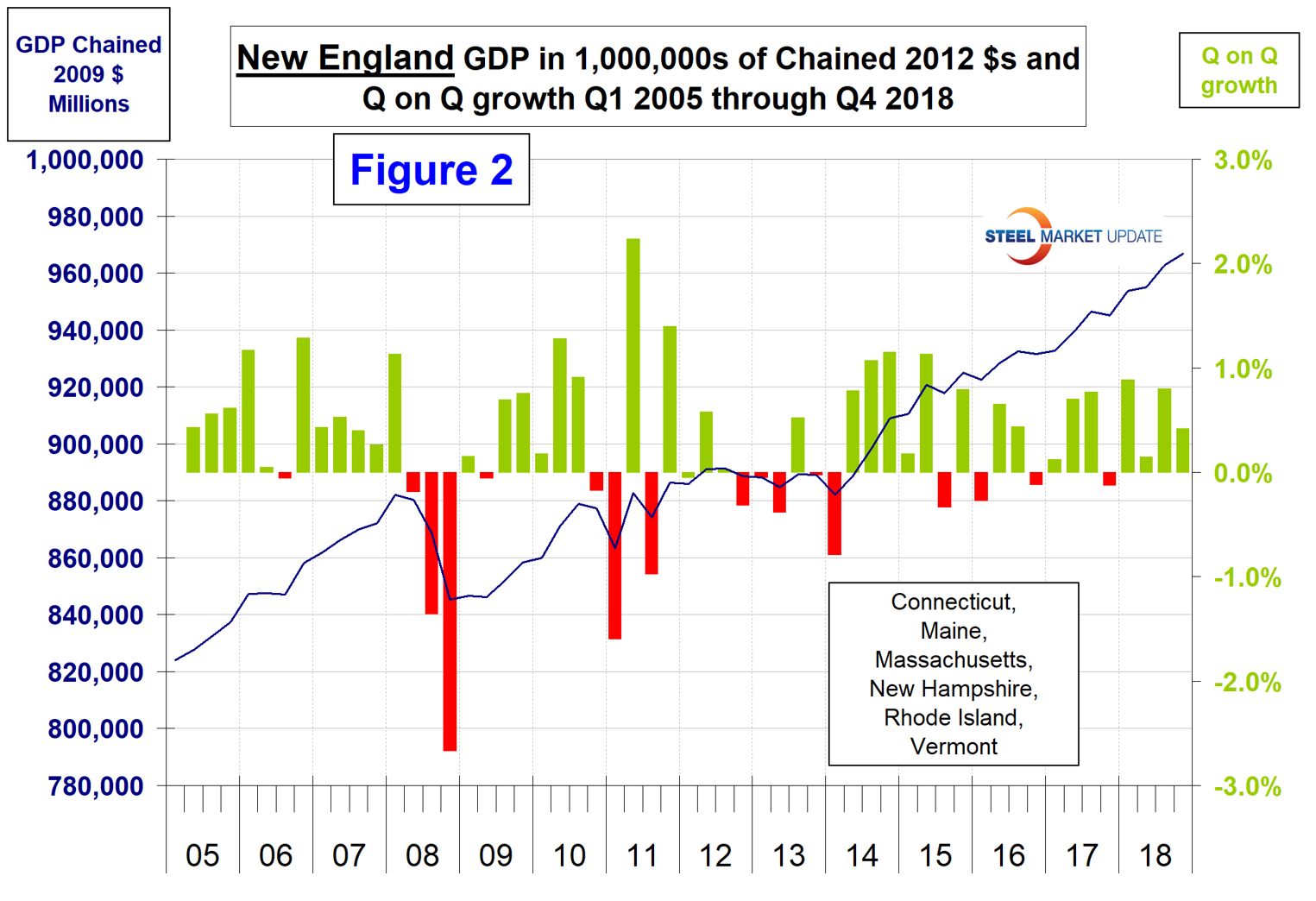Economy

BEA: All Regions Saw GDP Growth in 2018
Written by Peter Wright
May 23, 2019
U.S. gross domestic product grew in every region of the country in all four quarters of 2018, according to Bureau of Economic Analysis data.
The BEA introduced a new data set for GDP by state and region in 2014 and backdated it to Q1 2005. This week, the data was updated through Q4 2018. Even though this might be considered historically “old,” we think it’s worth reporting because it’s the foundation for where we are now. The data is published quarterly and is reported in chained 2012 dollars seasonally adjusted. Steel Market Update analyzes the data and reports to subscribers quarterly by region. Table 1 shows the growth of regional GDP in chained 2012 dollars quarter on quarter. (These growth numbers are not annualized as opposed to the headline number for the growth of national GDP, which is annualized.) In the second quarter of 2018, every region had positive growth.

Normally the BEA publishes a map of the United States showing annualized quarter-over-quarter growth of GDP by state within each region. In this latest report they substituted personal income, which accounts for almost 70 percent of GDP. Below is the map showing the year-over-year growth in personal income by state for 2018 compared to 2017. Washington State had the highest growth at 6.8 percent. Florida was the only state in the East to exceed a 5.0 percent growth. The Central Plains states of Nebraska and Kansas had the lowest growth at just over 3.0 percent.

Regions as defined by the BEA are as follows:
New England: Connecticut, Maine, Massachusetts, New Hampshire, Rhode Island, Vermont.
Mid East: Delaware, DC, Maryland, New Jersey, New York, Pennsylvania.
Great Lakes: Illinois, Indiana, Michigan, Ohio, Wisconsin.
Plains: Iowa, Kansas, Minnesota, Missouri, Nebraska, North Dakota, South Dakota.
South East: Alabama, Arkansas, Florida, Georgia, Kentucky, Louisiana, Mississippi, North Carolina, South Carolina, Tennessee, Virginia, West Virginia.
South West: Arizona, New Mexico, Oklahoma, Texas.
Rocky Mountain: Colorado, Idaho, Montana, Utah, Wyoming.
Far West: Alaska, California, Hawaii, Nevada, Oregon, Washington.
In the fourth quarter of 2018, the South West had the highest growth rate of GDP at 1.45 percent. This was almost double the Rocky Mountain region, which was in second place. The Mid East had the lowest at 0.27 percent.
Table 2 shows the GDP in millions of dollars annualized for the U.S. in total and for each of the eight regions. GDP is the value of the goods and services produced less the value of the goods and services consumed in each period. The South East region has the highest total GDP and the Rocky Mountains the lowest.

Figure 2 shows subscribers an example of the GDP graphs available on request for all regions and individual states. This example shows the results for New England, which has an annual economic output of just less than one trillion dollars.

In addition to this report of regional GDP, we publish quarterly reports of regional job creation and regional imports. Our intention with these three reports is to help subscribers determine whether their business is subject to headwinds or tailwinds in the regions where they operate.
The U.S. total GDP values in this report are slightly higher than the sum of the regional totals because the GDP-by-state numbers exclude federal military and civilian activity located overseas (because it cannot be attributed to a particular state). In addition, the official headline quarterly report of national GDP is annualized, which increases the value by a factor of four.

Peter Wright
Read more from Peter WrightLatest in Economy

Construction adds 13,000 jobs in March
The construction sector added 13,000 jobs, seasonally adjusted, in March, but tariffs could undermine the industry.

Supply chains, end-users brace for impact from tariffs
Supply chains are working through what the tariffs mean for them

ISM: Manufacturing expansion loses steam after two months of growth
US manufacturing activity slowed in March after two straight months of expansion, according to supply executives contributing to the Institute for Supply Management (ISM)’s latest report.

Chicago Business Barometer rose to 16-month high in March
The Chicago Business Barometer increased for the third-consecutive month in March. Despite this, it still reflects contracting business conditions, as it has since December 2023.

Durable goods orders rise again in February
Transportation equipment led the increase, rising 1.5% to $98.3 billion.
